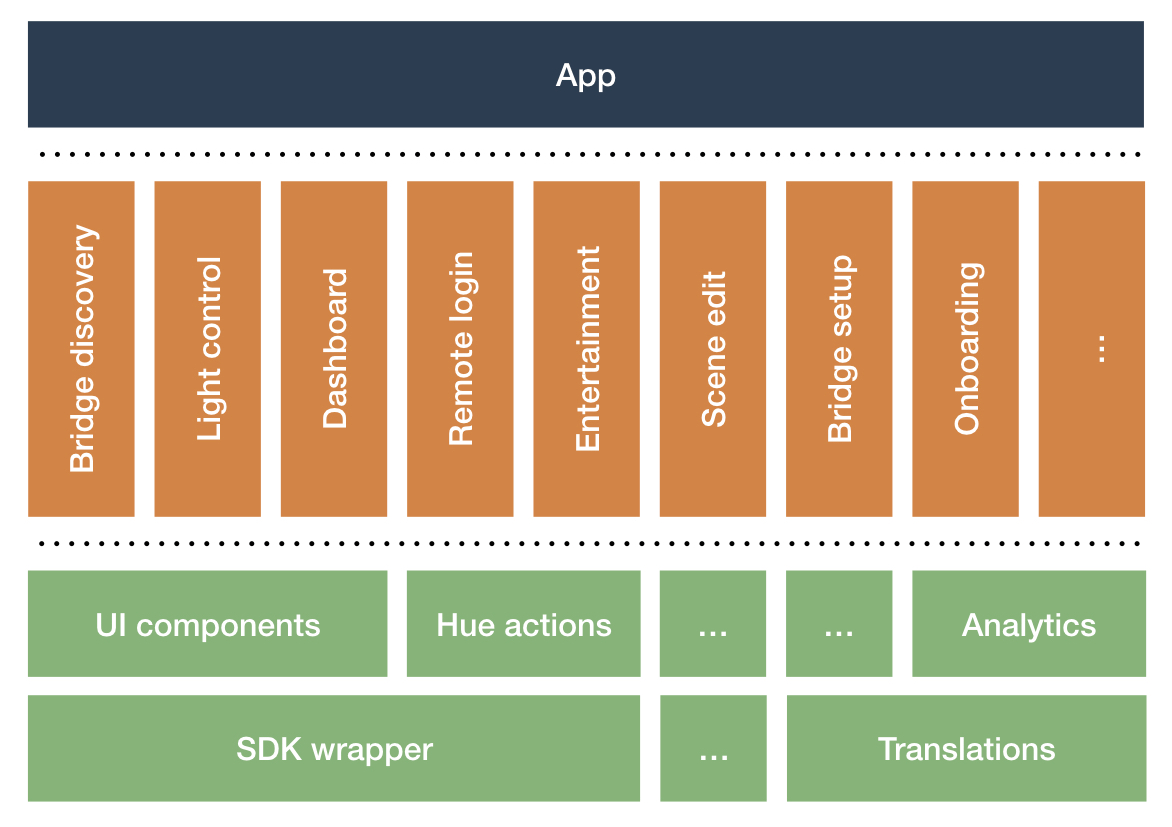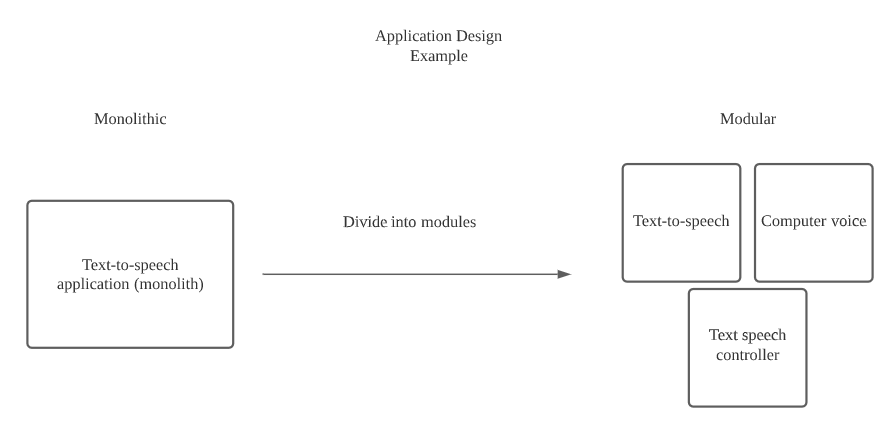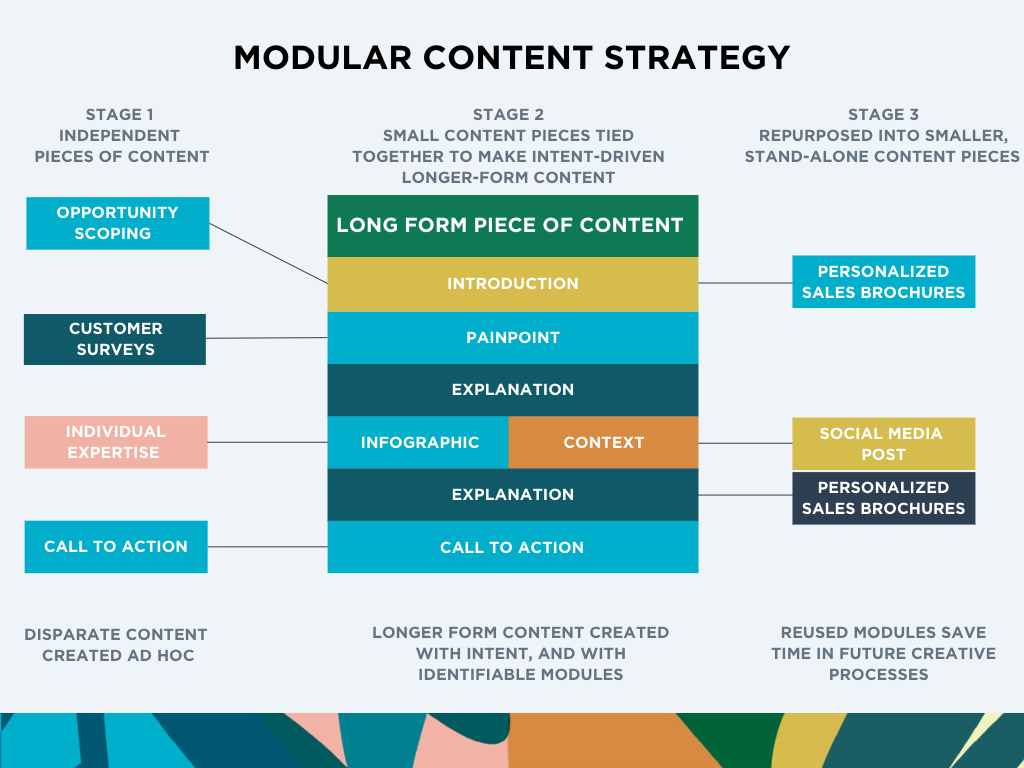Antwort What are examples of modularization? Weitere Antworten – What is an example of modularization

A Modular Product Architecture is a geometrical and logical structure for building a type of product based on a Modular System. For example, a company can use one Modular System for both washers and dryers. However, the washers and dryers have different Modular Product Architectures.A famous example of modularity is LEGO. These plastic toys contain elements that can easily be assembled and reused to develop different finished products.A Great Example of a Modular System. One of the best examples of a modular system is the Volkswagen Group cars. There is both incredible flexibility of the system, and there is a clear learning and improvement path over a long period of time.

What are 3 advantages of modularization : And at Binsky, we'll cooperate with any partner necessary to make that happen,” suggests Durr.
- #1: Faster Project Delivery.
- #2: Better Quality Assurance.
- #3: Safer Working Environments.
- #4: Cost Savings for Owners.
What is an example of modularity in business
The structure of the majority of software businesses is a well-known and common illustration of a modular organization. In a company similarly structured, one unit is responsible for developing software, another for providing customer support, and so on.
How do you use modularization : Methods for Modularization – Checking all the Boxes
- Creating a clear understanding of the customer and application needs.
- Capturing stakeholder needs, internal and external.
- Establishing relationships between functions and connecting functions to stakeholder requirements.
to design or produce something in separate sections: They have modularized their code, so you use just what you need.
For hardware, a module is an assembly of parts designed to be added and removed from a larger system easily. An example of a hardware module is a stick of RAM. Most modules are not functional on their own. They need to be connected to a larger system or be part of a system made up of several modules.
How many types of modular are there
There are many types of modular buildings: mobile offices, modular offices, portable offices, prefabricated booths, modular equipment buildings, prefabricated shelters, prefabricated garages, portable buildings, and prefabricated buildings, modular classrooms, modular clinics, and modular housing.Having a program broken into smaller sub-programs allows for easier management. The separate modules are easier to test, implement or design. These individual modules can then be used to develop the whole program. With Modular Programming, programmers can collaborate and work on the same application.In conclusion, modular architecture can bring many benefits to software development, including improved maintainability, reusability, and scalability. However, it also has its drawbacks, such as increased complexity, higher cost, and performance overhead.
A computer is one of the best examples of modular design. Typical computer modules include a computer chassis, power supply units, processors, mainboards, graphics cards, hard drives, and optical drives.
What is the concept of modularization : Modularization is a practice of organizing a codebase into loosely coupled and self contained parts. Each part is a module. Each module is independent and serves a clear purpose.
What is the process of modularization : Modularization is a process that breaks down complex systems into small and solvable parts. By dividing the product structure into modules, companies seek to optimize the way they function and operate in terms of transforming their products in a more flexible and accurate way.
What is the major principle of modularization
The basic principle of Modularity is that “Systems should be built from cohesive, loosely coupled components (modules)” which means s system should be made up of different components that are united and work together in an efficient way and such components have a well-defined function.
Make distinguishes five types of modules: Actions, Searches, Triggers, Aggregators and Iterators.The three kind of modules are Form Modules, Standard Modules and Class Modules.
What are the three types of modular : Modular construction can come in many forms and varieties, but the three most common are 2D panels, 3D modules, and hybrid modular construction.
- 2D Panels. 2D panels are the most cost-effective, easy to transport, and most common type of modular construction in use today.
- 3D Modules.
- Hybrid Modular Construction.




![csm_2405-bauerfeind-produktkategoriesseiten-bandagen-ellenbogenbandage-2560x1400_88-1_f91f66009c[1]](https://www.nakajimamegumi.com/wp-content/uploads/2024/06/csm_2405-bauerfeind-produktkategoriesseiten-bandagen-ellenbogenbandage-2560x1400_88-1_f91f66009c1-1024x521-65x65.jpg)
![Ischiasschmerzen[1]](https://www.nakajimamegumi.com/wp-content/uploads/2024/06/Ischiasschmerzen1-1024x640-65x65.jpg)
![csm_blogbeitrag_autoimmunerkrankung_d307ac8b72[1]](https://www.nakajimamegumi.com/wp-content/uploads/2024/06/csm_blogbeitrag_autoimmunerkrankung_d307ac8b721-1024x576-65x65.jpeg)